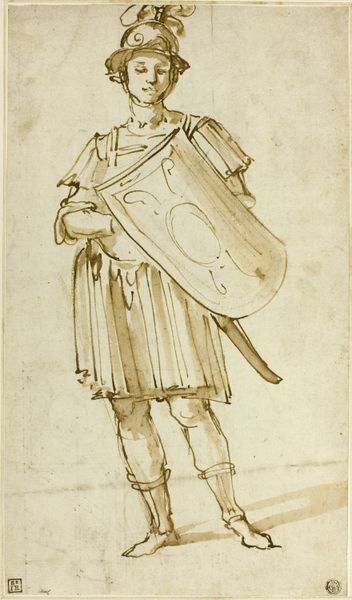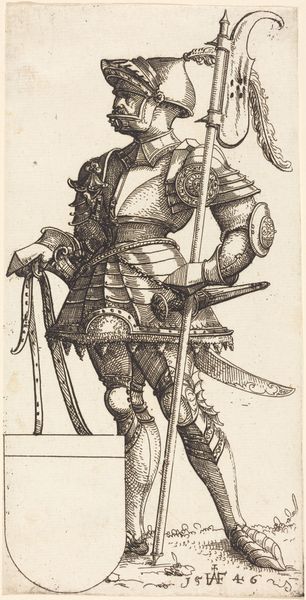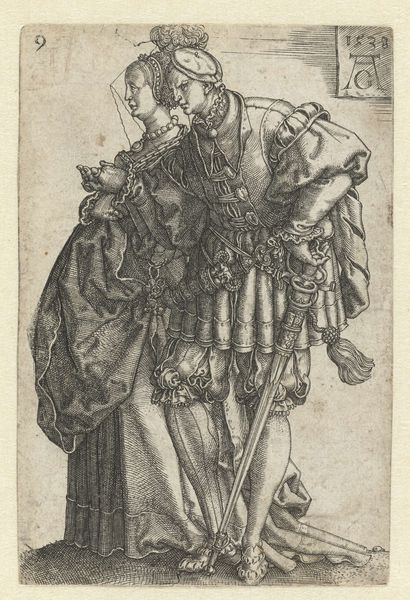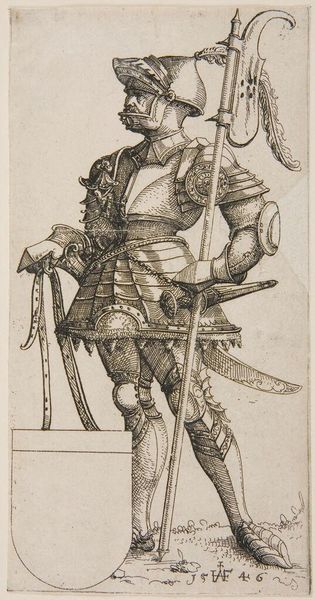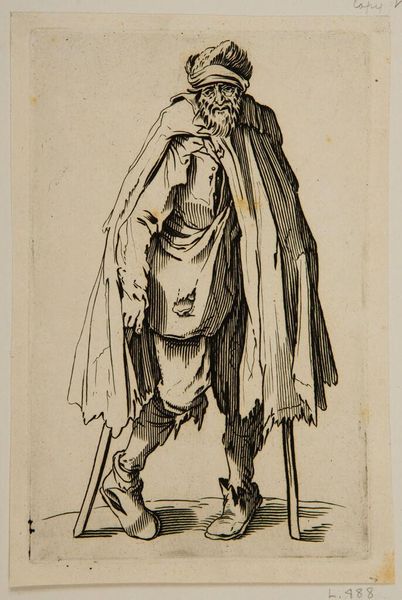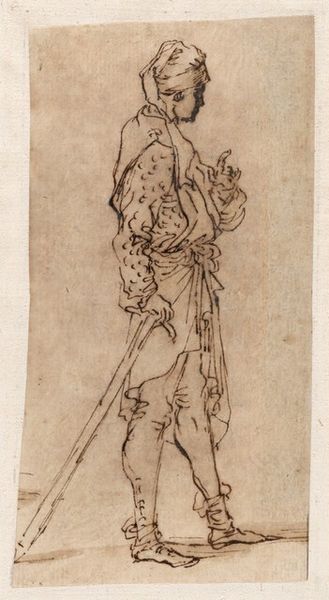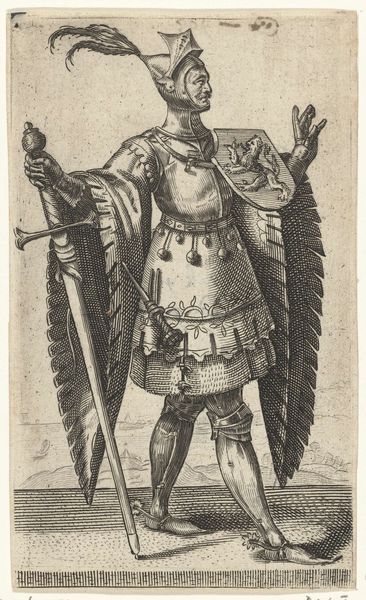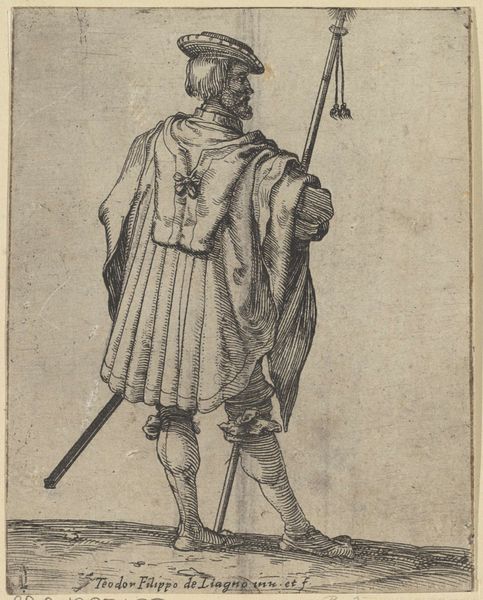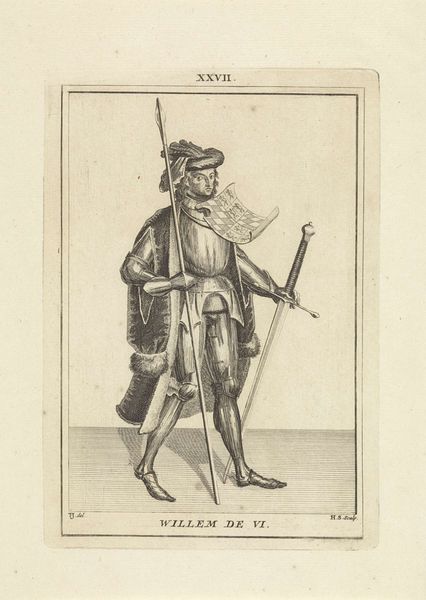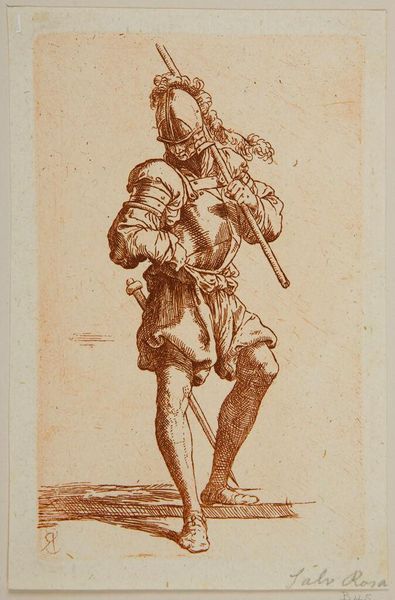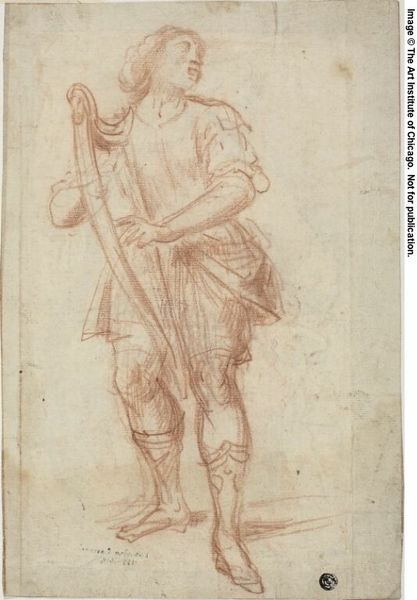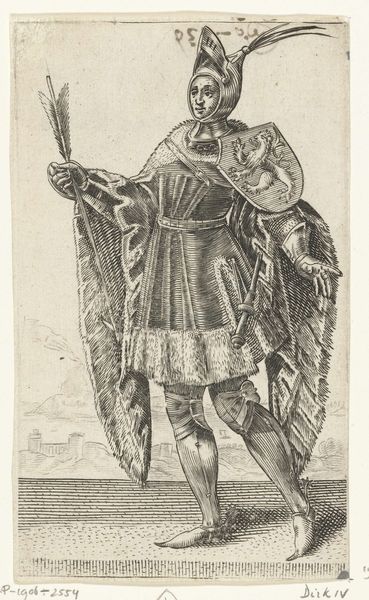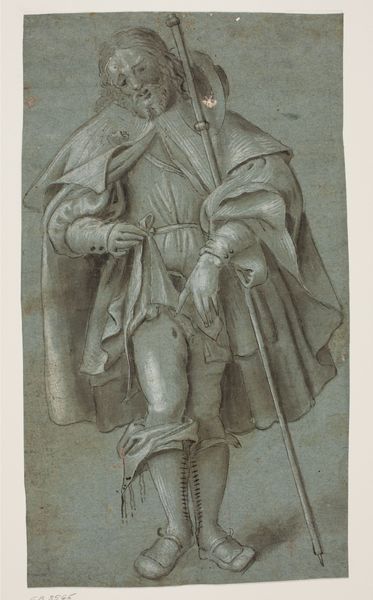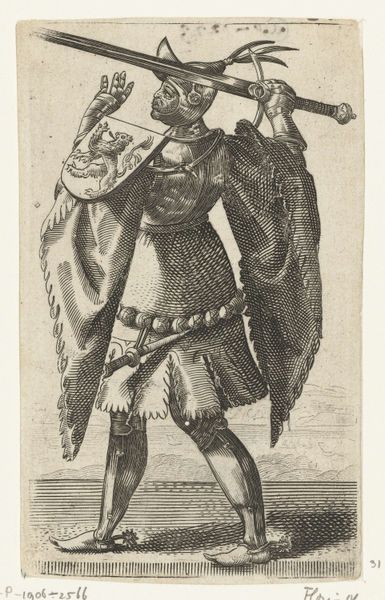
drawing, paper, ink
#
drawing
#
mannerism
#
figuration
#
paper
#
ink
#
line
#
history-painting
Dimensions: height 309 mm, width 199 mm
Copyright: Rijks Museum: Open Domain
Editor: This is "Pelgrim" by Luca Cambiaso, created sometime between 1560 and 1585. It's an ink drawing on paper. It seems to me like a quick study of a figure. What do you see in this piece from a formalist perspective? Curator: Immediately, the dominance of line asserts itself. Cambiaso's skillful, economic use of line not only defines the figure but also generates volume and texture. Consider the hat, cape, the almost geometric solidity of the legs against the ambiguous terrain. Notice how line weight varies to suggest depth and shadow. Editor: It’s interesting how the cape is so large and dominating in comparison to the rest of the drawing. Do you see any semiotic relationships at work here? Curator: Absolutely. The interplay between the line and negative space generates visual rhythms. The placement of the figure in the frame is itself a compositional statement, positioning it within a clear visual hierarchy. This asymmetry compels the viewer's gaze and invites deeper contemplation of its various components. Editor: So, it's not just a quick sketch, it is a deeper study of formal construction. Curator: Precisely. While the drawing may appear spontaneous, the underlying structural organization speaks to a calculated approach. Note, for example, the recurring shapes; the angular forms of the ground mirroring in a softened iteration of the brim of the hat. Do you notice how those forms create tension? Editor: I hadn't thought of that! Now that I'm looking at it, I appreciate the depth that is produced just from a few simple elements. Curator: Indeed, Cambiaso exemplifies the capacity to generate complex visual experiences through purely formal means. Editor: Thank you for helping me understand "Pelgrim" with fresh eyes!
Comments
No comments
Be the first to comment and join the conversation on the ultimate creative platform.
